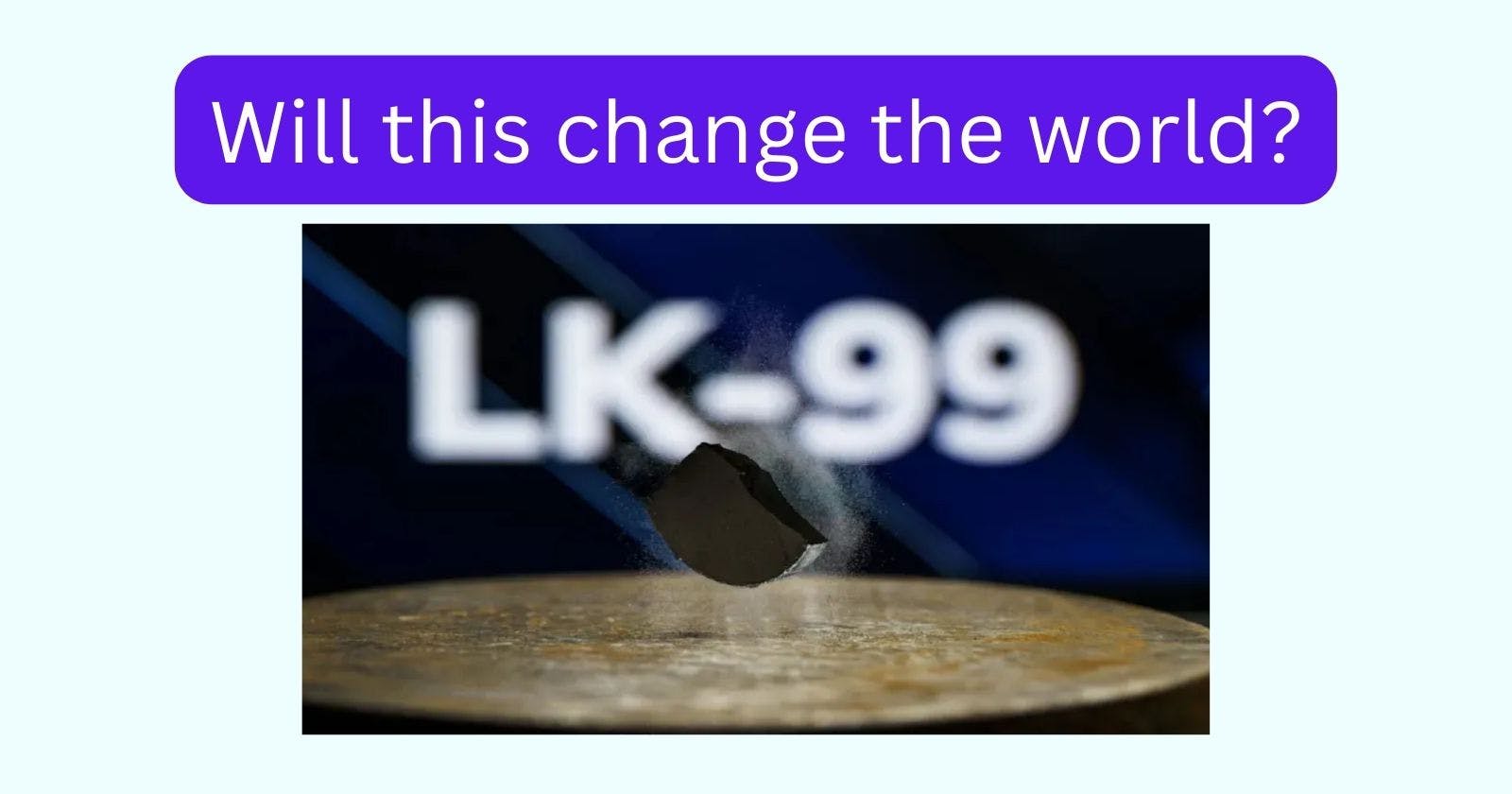**Update**: On August 18, 2023, it was confirmed that LK-99 isn't a superconductor. You can read more about this development here. I will retain the information in the rest of the post as it was originally written for the newsletter audience.
The Context
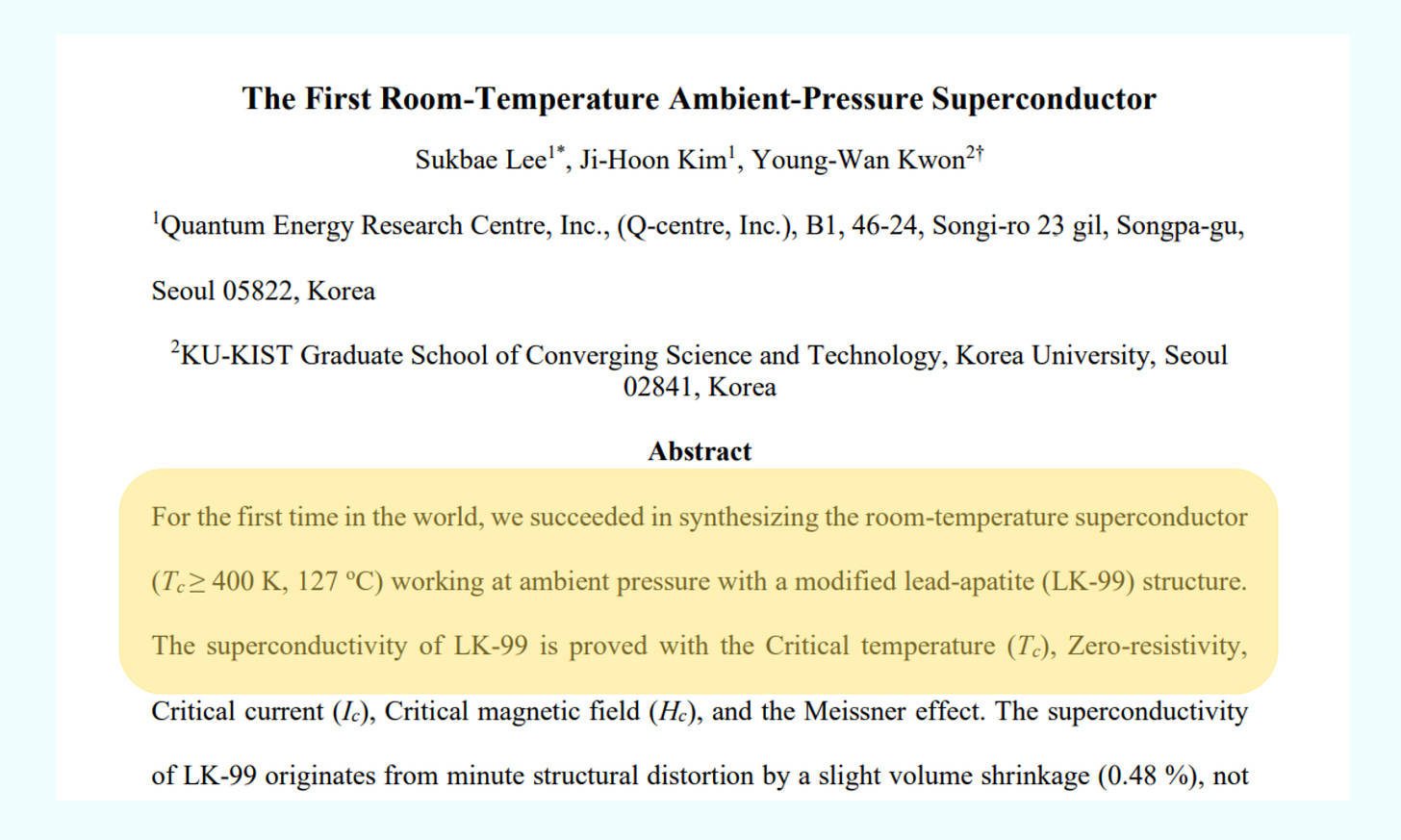
If you haven't been keeping up with the LK-99 saga on the internet in the past week, you're likely missing out on a remarkable and historic development.
Sukbae Lee, Ji-Hoon Kim, and Young-Wan Kwon—three individuals whose names could soon be etched in the annals of history or tainted by controversy.
Their recent publication on arXiv has sent shockwaves through the scientific community, as they claim to have unraveled the world's first room-temperature ambient pressure superconductor.
LK-99 is a fusion of lead, copper, phosphate, and oxygen.
This compound apparently holds the promise of propelling humanity into an unprecedented era of possibilities.
Okay, let's slow down a bit. Before we proceed, let's take a moment to grasp the concept of superconductivity.
Superconductivity

A regular conductor is a material that allows electricity or electrons to flow through it.
Examples of these materials are aluminum in high-voltage transmission lines, copper wires in your house, and even gold, silver, and ionized gas used in fluorescent light bulbs.
The problem with regular conductors is that they create resistance as electrons flow through them, causing heat.
That's why devices like computers need fans and heat sinks, and power lines run at high voltages, which is not ideal.
Superconductors, on the other hand, are materials that can carry electricity without any resistance.
But the catch is that they only work at extremely cold temperatures near absolute zero or under intense pressure, making them impractical for most uses.
There are some exceptions like specialized MRI machines.
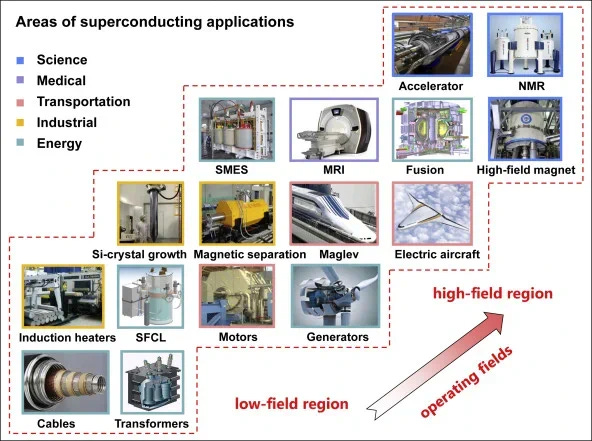
Courtesy: https://twitter.com/Andercot
History of Superconductors
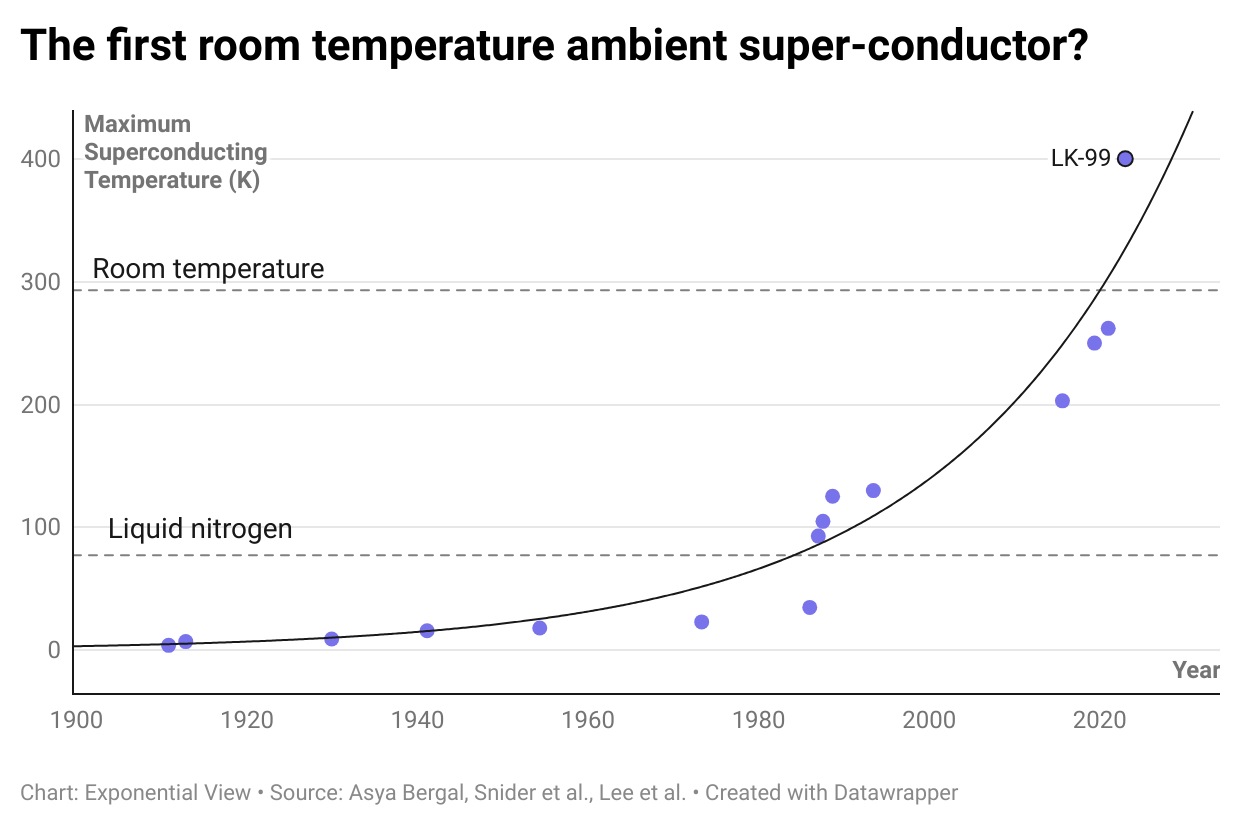
Superconductors were first discovered in 1911 by Dutch physicist Heike Kamerlingh Onnes. He found that certain metals when cooled to very low temperatures, lost all electrical resistance.
Since then, scientists have been working on developing superconductors that work at higher temperatures, as this would have significant implications for a wide range of applications
1913, lead was found to superconduct at 7K (-266.15°C).
1933, when Meissner and Ochsenfeld discovered that superconductors expelled applied magnetic fields, a phenomenon that has come to be known as the Meissner effect.
1941, niobium nitride was found to superconduct at 16 K(-257.15°C)
1957, Bardeen, Cooper, and Schrieffer proposed the complete microscopic theory of superconductivity, known as the BCS theory, which explained the superconducting current as a superfluid of Cooper pairs, pairs of electrons interacting through the exchange of phonons.
1962, the first commercial superconducting wire, a niobium-titanium alloy, was developed by researchers at Westinghouse.
In the 21st century, superconductivity remains a challenging field, with only one widespread application having emerged in the 100 years since its discovery.
This 2-year-old video by VICE explains how “Roop Temperature Superconductors Will Change Everything”.
Now let’s get back to LK-99. As important as the Korean researchers’ discovery is, their claims need to be independently verified before these possibilities can become a reality.
The Controversies and ‘Breakthroughs’
Developing room-temperature superconductors has been a major challenge for scientists, as it requires finding materials that can conduct electricity without resistance at temperatures that are practical for everyday use.
There has been some controversy surrounding the recent claims about LK-99, with some researchers questioning whether it is truly a superconductor.
Verge.com in its article points out that 2 preprints were published to arXiv and the two preprints disagree with each other.
However, tech enthusiasts on Twitter(X) and other social media, did not hold back in recreating the compound. In fact, some claimed that LK-99 “is the real deal”.
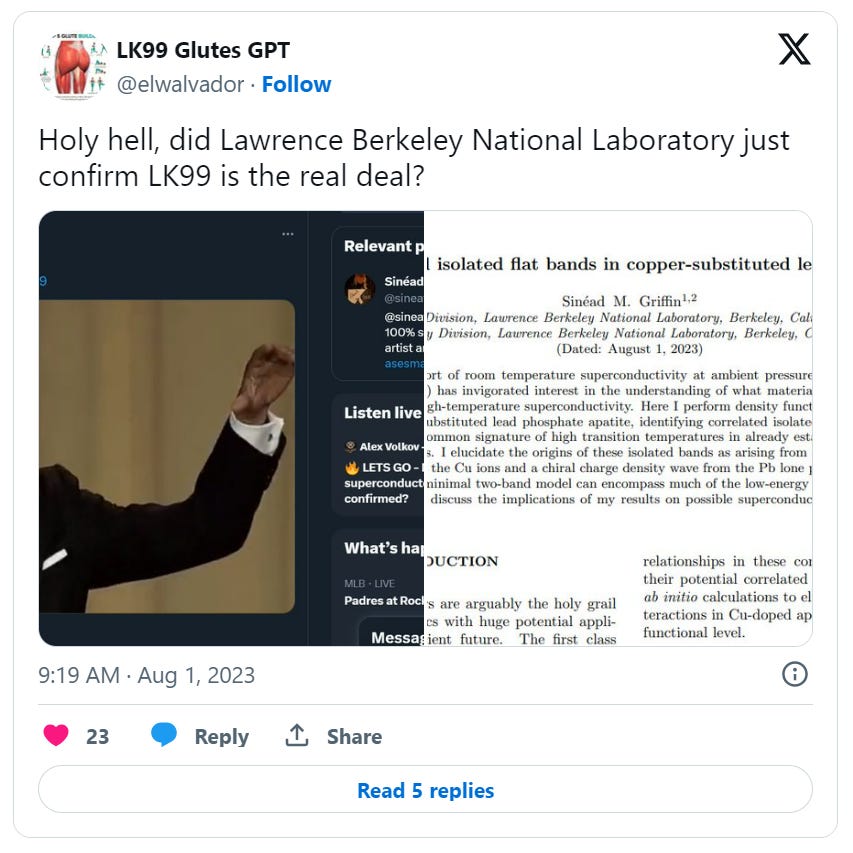
Some users claim that LK-99 exhibited the “Meisner Effect” and achieved “Quantum Lock” at room temperature.
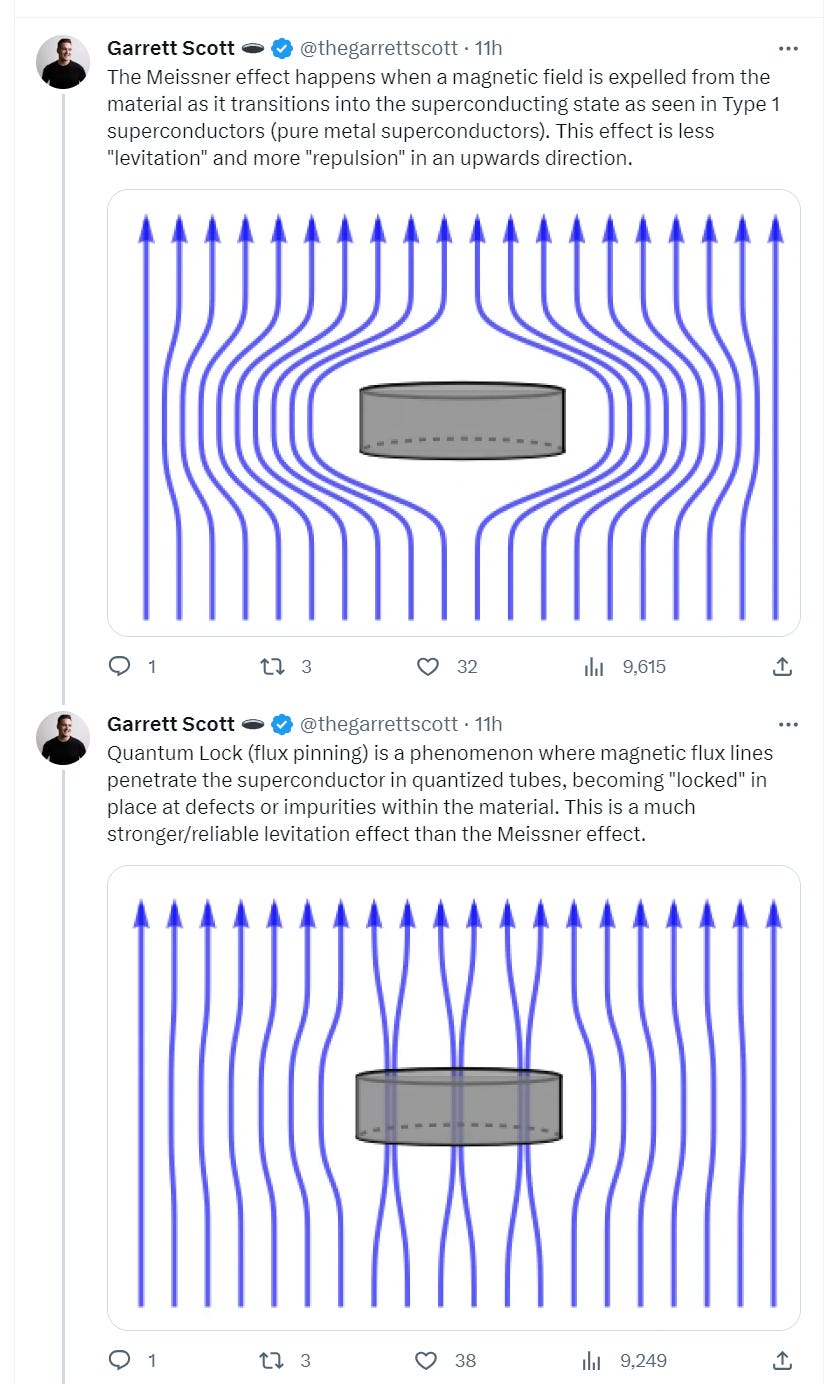
While the legitimacy of the claim is yet to be corroborated by a trusted source, the results of the compound so far are promising.
In case the claims above are true, the future will be insane. What would that mean for Software Engineers?
Implications for Software Engineers
Faster and more energy-efficient processors: Room-temperature superconductors could lead to faster and more energy-efficient processors. This could lead to more powerful computing systems that consume less energy.
New algorithms and software applications: Room-temperature superconductors could be used to create more efficient data storage systems or to improve the performance of machine learning algorithms.
Advancements in quantum computing: Superconductors are a key component of quantum computing. If LK-99 is a room-temperature superconductor, it could lead to significant advancements in fields such as cryptography, drug discovery, and materials science.
New opportunities for innovation: The development of room-temperature superconductors could open up new opportunities for innovation in various industries. Software engineers could play a key role in developing new applications and technologies that leverage the capabilities of superconductors.
Conclusion
While there is still some controversy surrounding LK-99 and its potential as a room-temperature superconductor, recent developments have sparked a lot of interest in the scientific community.
If superconductors can be developed that work at higher temperatures, it could have significant implications for a wide range of applications, including computing and renewable energy technologies.
I write about System Design, UX, and Digital Experiences. If you liked my content, do kindly like and share it with your network. And please don't forget to subscribe for more technical content like this.
